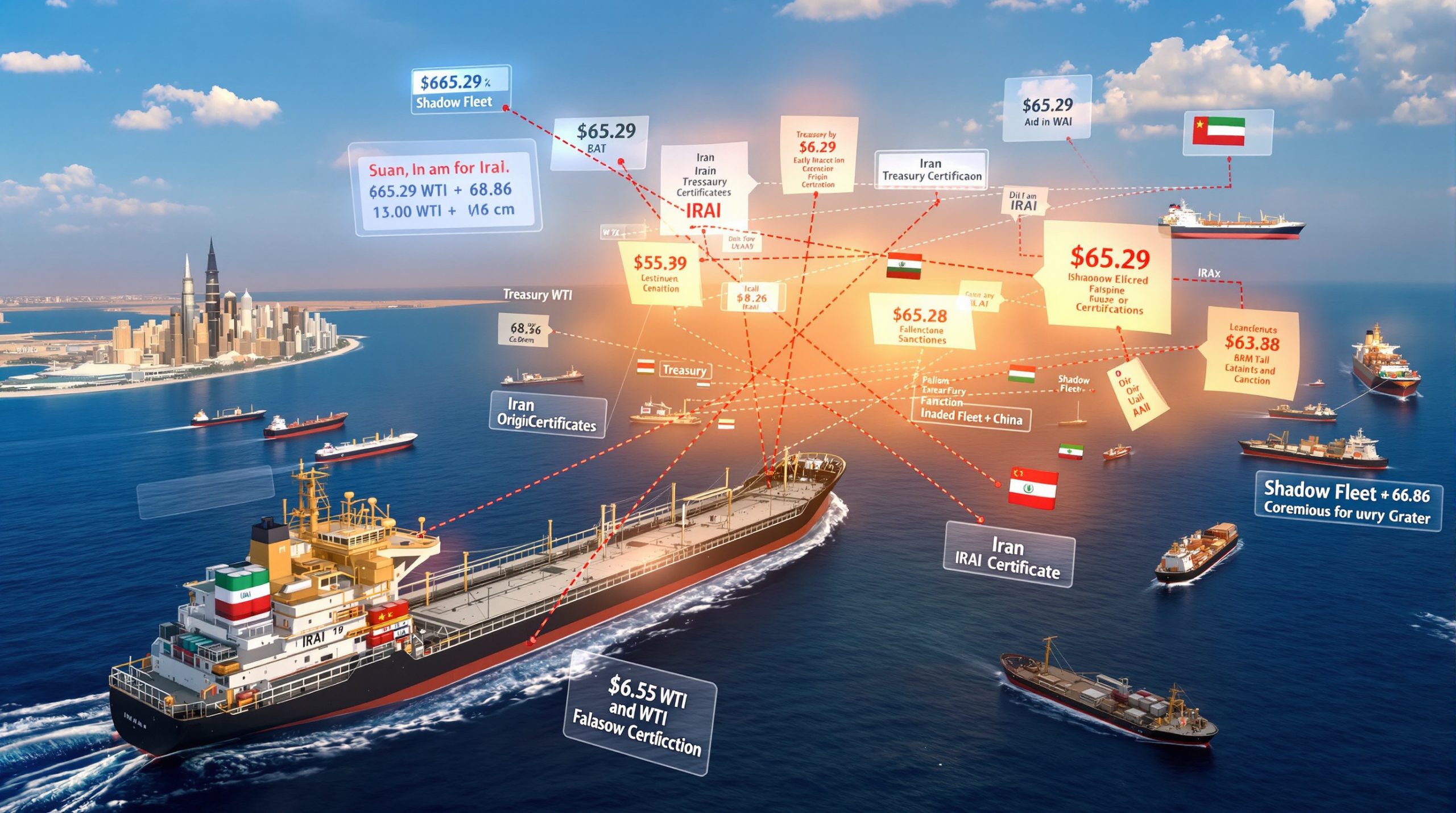Canada's Critical Minerals Alliance Strategy: Building Global Partnerships for Supply Security
Canada is implementing a comprehensive strategy to secure critical minerals energy security through international alliances. As global competition intensifies and China continues to impose export restrictions on key materials vital for advanced technologies and defense applications, the Canadian government recognizes that diversifying supply sources has become essential for national and allied security.
Current supply chain vulnerabilities
Global critical mineral supply chains face significant vulnerabilities that threaten technological advancement and economic security across allied nations. Currently, production of many strategic minerals is highly concentrated in a handful of countries, creating dangerous dependencies for Western economies.
Chinese export restrictions on rare earth elements, gallium, germanium, and graphite have highlighted the fragility of existing supply arrangements. According to Reuters reporting from September 2025, these restrictions have created urgent challenges for industries ranging from renewable energy to defense technology manufacturing.
The clean energy transition has dramatically increased demand for battery metals, magnets, and semiconductor materials, putting additional pressure on already constrained supply chains. Industry analysts project lithium demand will triple by 2030, while rare earth element requirements for permanent magnets could increase by 400% over the same period.
Geopolitical tensions between major economies have further complicated mineral trade relationships, with supply uncertainty becoming a strategic concern for G7 and NATO nations. The vulnerability extends beyond raw materials to processing capabilities, where China maintains dominant market positions in many critical mineral value chains.
Infrastructure bottlenecks and complex regulatory environments in Western nations have historically limited the development of alternative supply sources, though this is beginning to change with focused government initiatives.
Canada's strategic positioning
Canada possesses natural advantages that position it ideally to address these challenges. The country hosts abundant domestic resources of critical minerals, including significant deposits of lithium, cobalt, nickel, rare earth elements, and graphite.
With centuries of mining expertise and well-established infrastructure, Canada's resource sector combines technical capability with stringent environmental and safety standards. The mining industry employs approximately 400,000 Canadians and contributes over 5% to national GDP, providing a strong foundation for expansion.
Canada's membership in both G7 and NATO creates natural partnership opportunities with other advanced economies seeking supply security. These existing diplomatic and defense relationships facilitate collaboration on mineral security initiatives.
The country's commitment to environmentally and socially responsible mining practices aligns with growing demands from consumers and manufacturers for ethical supply chains. Canadian mining operations adhere to some of the world's most rigorous environmental protection and community engagement standards.
Geographic proximity to the United States, which receives 56% of Canada's mineral exports, creates logistical advantages and supply chain efficiencies that benefit both nations while reducing transportation-related carbon emissions.
What specific actions is Canada taking to secure critical minerals?
Canada's approach combines domestic development with international partnerships to create resilient supply chains that benefit multiple allied nations. This dual focus allows for risk sharing while building more robust and diversified mineral supply networks.
International alliance building initiatives
According to Reuters reporting from September 2025, Canada's Energy and Natural Resources Minister Tim Hodgson confirmed that Ottawa is actively working with international allies to potentially fund critical mineral projects designed to reduce reliance on Chinese supply. The focus centers on materials essential for advanced technologies and defense applications that have faced Chinese export limitations in recent months.
Unlike U.S.-focused domestic programs, Canada is developing shared output agreements that distribute production among multiple allied nations. As Minister Hodgson stated: "The difference between the MP Materials deal is all of the output goes to the United States there. We are interested in doing these sorts of deals in partnership with our allies to share the output with our allies."
This collaborative approach extends to creating multinational investment consortiums that spread financial risk across participating countries. By pooling capital resources, these arrangements make large-scale projects more financially viable while ensuring supply security for all partners.
Technical collaboration frameworks with partner nations facilitate knowledge sharing and accelerate innovation in extraction and processing technologies. These partnerships aim to develop more efficient, environmentally sustainable mining and refining methods.
Efforts to harmonize regulatory standards across allied countries seek to reduce compliance complexity for operators while maintaining high environmental and social performance benchmarks. This regulatory alignment supports more efficient cross-border investment and development.
Domestic policy developments
In August 2025, Canada introduced a tariff rate quota system for steel imports aimed at protecting domestic manufacturing capabilities. The system applies to all countries with free trade agreements with Canada—except the United States and Mexico.
For countries without such agreements, the tariff-free quota has been reduced to 50% of 2024 import volumes, down from the previous 100% allowance. Imports exceeding the new quota now face a 50% tariff, signaling Canada's commitment to maintaining strategic industrial capacity while balancing international trade obligations.
These protective measures for domestic steel manufacturing demonstrate Canada's broader recognition of the strategic importance of maintaining processing capabilities within its borders. Similar approaches are being considered for other critical material value chains.
The Canadian government has prioritized investment in transportation and processing infrastructure to support mineral development in remote regions. These investments address logistical bottlenecks that have historically limited resource development.
Streamlining of mining permit processes, while maintaining environmental standards, aims to reduce the time required to bring new projects online. This regulatory efficiency is particularly important for critical minerals, where supply gaps create urgent development timelines.
Which critical minerals are the focus of Canada's strategy?
The Canadian initiative prioritizes minerals that face supply constraints and are essential for strategic industries including clean energy, defense, and advanced manufacturing.
High-priority critical minerals
Rare earth elements have become centerpieces of Canada's mineral strategy. These 17 elements are essential for producing permanent magnets used in electric vehicles, wind turbines, and defense systems. China currently dominates global rare earth processing, controlling approximately 85% of refined production capacity.
Battery materials including lithium, cobalt, nickel, and graphite represent another priority category. These minerals are fundamental to energy storage technologies powering electric vehicles and renewable energy systems. Canada possesses significant reserves of these materials, particularly in Quebec, Ontario, and Saskatchewan.
Semiconductor components such as gallium and germanium have gained strategic importance as China has implemented export restrictions on these materials. These elements are essential for electronics manufacturing, telecommunications, and computing applications where supply disruptions threaten technological development.
Strategic metals including tungsten, titanium, and vanadium support aerospace and defense applications where material performance requirements are exceptionally demanding. These metals provide unique properties that cannot easily be replicated with alternative materials, making supply security particularly critical.
Supply risk assessment factors
Canada's prioritization approach evaluates minerals based on several risk factors. The current concentration of global production represents a primary concern, with minerals produced by few countries receiving higher priority. For example, China produces approximately 60% of global rare earth elements, creating significant supply risk.
Processing capacity limitations present another challenge, as extracting minerals is only the first step in creating usable materials. For many critical minerals, refining capacity is even more concentrated than mining production, creating additional supply vulnerabilities.
Export restrictions by major producers have directly demonstrated supply risks in recent years. Chinese export controls on gallium, germanium, and rare earth elements have highlighted the vulnerability of current supply chains.
Projected demand growth in clean technology sectors creates urgency for developing new supply sources. Electric vehicle battery demand alone is projected to increase by 500% by 2030, requiring massive expansion of mineral production.
Substitution difficulties and recycling limitations further complicate supply security for many critical minerals. Unlike some bulk commodities, many critical minerals have unique properties that make substitution impossible without performance compromises, while current recycling technologies and infrastructure remain inadequate for meeting demand.
How is Canada collaborating with specific international partners?
Canada is developing tailored partnerships with key allies to address shared critical mineral security concerns. These relationships leverage existing diplomatic, trade, and security frameworks while creating new mechanisms for resource collaboration.
United States partnership
The U.S.-Canada relationship builds on deeply integrated supply chains that have evolved over decades of cross-border trade. The United States receives 56% of Canada's mineral exports, creating natural synergies for further collaboration.
While complementing the U.S. Department of Defense partnership with MP Materials announced July 10, 2025, Canada's approach differs in its multinational output-sharing model. As Minister Hodgson noted, the MP Materials arrangement directs all production to U.S. domestic use, whereas Canada's strategy emphasizes distribution among multiple allied nations.
Cross-border processing capabilities are being developed to optimize the overall North American supply chain, allowing each country to focus on areas of comparative advantage. These integrated facilities reduce duplication of infrastructure while ensuring supply security for both nations.
Coordinated critical mineral stockpiling strategies between the two countries create more efficient emergency reserves while reducing overall carrying costs. These coordinated inventories ensure material availability during supply disruptions without unnecessarily duplicating stockpiles.
The U.S. position as Canada's largest mineral export market creates strong economic incentives for continued collaboration. This established trade relationship provides a solid foundation for expanded partnerships in critical mineral development.
European collaborations
The Joint Declaration of Intent with Germany on mineral supply security represents one of Canada's most significant European partnerships. This agreement establishes frameworks for joint project development, technical collaboration, and market access guarantees.
Research and development partnerships with European institutions leverage complementary expertise in mineral processing, recycling technologies, and substitution research. These technical collaborations accelerate innovation while sharing development costs.
Co-funding arrangements for new mining and processing projects distribute financial risk while ensuring supply access for all participating nations. These financial partnerships make capital-intensive projects more viable while providing supply security benefits to multiple countries.
Technology transfer agreements for advanced extraction methods help accelerate project development by implementing best practices from global operations. These knowledge-sharing arrangements improve project economics while reducing environmental impacts.
Market access guarantees for Canadian mineral products provide investors with confidence in long-term demand, making project financing more accessible. These offtake arrangements reduce market risk while ensuring European access to essential materials.
What financial mechanisms support Canada's critical minerals strategy?
The Canadian government is implementing innovative funding approaches to accelerate critical mineral development. These financial mechanisms address the significant capital requirements and extended development timelines that characterize mining projects.
Public-private partnership models
Government co-investment in strategic projects helps address the capital intensity of new mining and processing facilities. These investments typically focus on enabling infrastructure that benefits multiple projects rather than direct ownership of mining operations.
Risk-sharing arrangements with private sector partners distribute financial exposure while aligning public and commercial interests. These structures may include government equity participation, contingent loans, or completion guarantees.
Loan guarantee programs for processing facilities address the higher technical and market risks associated with downstream operations. These guarantees reduce borrowing costs for project developers while ensuring domestic processing capacity development.
Tax incentives for domestic mineral production improve project economics while encouraging investment in priority materials. These incentives may include accelerated depreciation, exploration tax credits, or reduced royalty rates for strategic minerals.
Export development financing for international projects supports Canadian companies developing resources in partner countries, extending supply chain security beyond domestic borders. These financing programs typically offer competitive terms for projects that incorporate Canadian equipment, services, or expertise.
Multinational funding structures
Joint investment vehicles with allied nations pool capital resources while ensuring equitable distribution of output and benefits. These multinational funds reduce individual country exposure while creating larger investment pools for major projects.
Coordinated development bank financing brings together institutions like Export Development Canada, the European Investment Bank, and the U.S. International Development Finance Corporation to support strategic projects with blended finance approaches.
Shared infrastructure development costs distribute the burden of building transportation, energy, and water systems that enable remote resource development. These cost-sharing arrangements make frontier projects more economically viable.
Technology commercialization partnerships accelerate the deployment of innovative extraction and processing methods by sharing research and development costs. These collaborations reduce technical risk while improving project economics.
Long-term offtake agreements with partner countries provide revenue certainty for project developers while ensuring supply access for participating nations. These agreements typically include volume commitments and pricing mechanisms that provide stability for both producers and consumers.
How will Canada's strategy impact global mineral markets?
Canada's alliance-building approach aims to transform critical mineral supply dynamics while supporting domestic industries. These effects will extend beyond Canadian borders to reshape global market structures, price dynamics, and trade relationships.
Expected market outcomes
Diversification of global supply sources represents the primary objective and likely outcome of Canada's strategy. By developing alternative production centers, the initiative will reduce market concentration and associated supply risks.
Reduced price volatility for strategic materials should result from more distributed production and increased market transparency. Historical price spikes for rare earth elements and other critical minerals have often resulted from supply concentration and opaque market practices.
Development of alternative processing technologies may produce more environmentally sustainable and cost-effective production methods. Innovation in processing represents a particular focus area, as this segment of the value chain often creates environmental challenges and supply bottlenecks.
Creation of more transparent market mechanisms, including potential trading platforms specifically for critical minerals, would improve price discovery and risk management. Current critical mineral markets often lack the liquidity and transparency found in more established commodity markets.
Establishment of ESG-compliant supply chains responds to growing demand from manufacturers and consumers for responsibly sourced materials. Canadian operations typically maintain high environmental and social standards that align with these requirements.
Protective measures for domestic industries
Implementation of a 50% tariff on steel imports exceeding quota limits demonstrates Canada's commitment to maintaining domestic processing capabilities. This measure, introduced in August 2025, protects Canadian producers while maintaining preferential access for free trade partners.
Differentiated treatment for free trade agreement partners balances trade commitments with domestic industry protection. Countries with free trade agreements maintain preferential access, though with reduced quota volumes.
Special exemptions for the United States and Mexico recognize the integrated nature of North American supply chains. These exemptions preserve the benefits of regional integration while protecting against import surges from other regions.
Support for domestic processing capacity development acknowledges that raw material production alone does not provide supply security. Processing represents a critical vulnerability in many mineral supply chains, with even greater concentration than mining operations.
Strategic stockpiling of critical materials provides insurance against short-term supply disruptions. These inventories complement increased domestic production and processing capacity in Canada's comprehensive security strategy.
What challenges does Canada face in implementing its strategy?
Despite its ambitious plans, Canada must overcome significant obstacles to achieve its critical mineral objectives. These challenges span financial, technical, regulatory, and competitive dimensions of mineral development.
Implementation hurdles
High capital costs for new mining and processing facilities represent a primary challenge, with major projects often requiring billions of dollars in investment. Critical mineral processing facilities in particular tend to be capital-intensive with extended payback periods.
Extended timelines for project development and permitting can delay production by 5-10 years from initial discovery to operation. These long lead times complicate supply security planning and investment decisions.
Technical challenges in processing complex mineral deposits often require specialized expertise and custom-designed facilities. Many critical mineral ores contain multiple elements that must be separated through sophisticated processes.
Competition from established global suppliers with lower production costs presents market challenges for new Canadian operations. Many existing producers benefit from lower labor costs, less stringent environmental requirements, or state subsidies.
Balancing environmental protection with resource development requires careful management of land use, water resources, and emissions. Mining operations inherently create environmental impacts that must be minimized through appropriate technologies and practices.
Mitigation approaches
Regulatory streamlining for priority projects aims to reduce development timelines without compromising environmental standards. These approaches typically include concurrent rather than sequential review processes and dedicated regulatory support teams.
Technical innovation support programs address processing challenges through research funding, pilot plant development, and technology demonstration projects. These initiatives accelerate the commercialization of new extraction and processing methods.
Workforce development initiatives ensure availability of skilled labor for construction and operation of new facilities. Critical mineral projects often require specialized technical knowledge that must be developed through targeted training programs.
Indigenous partnership frameworks create meaningful involvement opportunities while addressing rights and title considerations. Successful projects increasingly involve Indigenous communities as equity partners, service providers, and employees.
Environmental best practices implementation ensures Canadian operations maintain their reputation for responsible resource development. This approach not only secures regulatory approval but also responds to market demand for sustainably produced materials.
How does the MP Materials case study inform Canada's approach?
The partnership between MP Materials and the U.S. Department of Defense provides a template for Canada's strategy, with important differences that reflect Canada's multinational focus and collaborative approach.
MP Materials partnership structure
The public-private collaboration announced on July 10, 2025, aims to develop domestic rare earth magnet manufacturing in the United States. This vertically integrated approach connects mining operations at Mountain Pass, California, with downstream processing and manufacturing.
The partnership focuses on reducing U.S. dependency on imported materials, particularly from China, which currently dominates global rare earth processing and magnet manufacturing. This self-sufficiency objective aligns with broader U.S. supply security priorities.
Integration of mining, processing, and manufacturing capabilities creates a complete value chain within U.S. borders. This vertical integration reduces vulnerability to disruptions in international supply chains.
National security considerations driving investment decisions reflect the critical importance of rare earth magnets in defense systems. These materials are essential components in missile guidance systems, radar equipment, and other military applications.
The domestic-focused output allocation directs all production to U.S. markets, primarily serving defense and critical infrastructure applications. This approach prioritizes national security objectives over international market considerations.
Canada's adaptive approach
Canada's public-private partnership model incorporates similar government support mechanisms but extends benefits across multiple allied countries. This approach recognizes the reality that even large economies benefit from collaboration on capital-intensive mineral projects.
Output sharing arrangements with multiple allied countries distribute production among participating nations based on investment contributions and strategic priorities. This collaborative model spreads both benefits and risks.
Emphasis on complementary capabilities across partner nations allows each country to focus on areas of comparative advantage. Some partners may contribute mining expertise, while others bring processing technology or manufacturing capabilities.
Canada's strategy encompasses a broader range of target minerals beyond rare earths, addressing the full spectrum of materials facing supply constraints. This comprehensive approach recognizes diverse vulnerabilities across industrial sectors.
Integration with existing international trade frameworks leverages established relationships rather than creating entirely new mechanisms. This approach builds on Canada's extensive network of trade agreements and diplomatic relationships.
What are the implications for global critical mineral security?
Canada's initiative represents a significant shift in how allied nations approach resource security in an increasingly competitive global landscape. The implications extend beyond immediate supply considerations to reshape international relationships, technology development, and environmental practices.
Geopolitical significance
Countering strategic resource leverage by dominant suppliers represents a primary objective of Canada's approach. By developing alternative supply sources, the initiative reduces the effectiveness of export restrictions as geopolitical tools.
Building resilience against future export restrictions provides insurance against policy changes by major producing countries. This resilience supports long-term investment in technologies that depend on critical minerals.
Creating alternative supply chains for defense-critical materials ensures military capabilities are not compromised by supply disruptions. Defense systems increasingly rely on advanced materials with limited substitution possibilities.
Strengthening economic ties among democratic nations through resource collaboration builds broader geopolitical alliances. These mineral partnerships may serve as foundations for expanded cooperation in other domains.
Establishing ethical sourcing standards for critical minerals differentiates democratic supply chains from those with weaker environmental and labor protections. These standards respond to growing stakeholder concerns about responsible sourcing.
Long-term strategic outcomes
Development of circular economy approaches to critical minerals will reduce primary material requirements over time. Improved recycling technologies, design for disassembly, and urban mining will complement new production.
Advancement of substitution technologies for constrained materials may reduce dependency on the most vulnerable supply chains. Research into alternative materials can create more sustainable, less geopolitically sensitive options.
Creation of more transparent and stable global markets will benefit both producers and consumers of critical minerals. Improved price discovery, contract standardization, and market liquidity reduce investment risks.
Reduction of environmental impacts through best practices implementation ensures mineral development supports rather than undermines climate objectives. More efficient extraction and processing methods minimize carbon emissions, water usage, and land disturbance.
Support for indigenous communities in resource-rich regions creates more equitable distribution of benefits from mineral development. Meaningful partnerships with Indigenous peoples have become essential to successful project development in Canada.
FAQ: Canada's Critical Minerals Strategy
Why is Canada focusing on critical minerals now?
Recent export restrictions by China on materials essential for advanced technologies have highlighted vulnerabilities in global supply chains. In September 2025, Reuters reported that these restrictions have created significant challenges for G7 and NATO member states, particularly affecting industries ranging from electric vehicles to defense systems. Canada's abundant mineral resources, technical expertise, and strong relationships with G7 and NATO allies position it to play a central role in developing alternative supply sources that reduce dependency on concentrated production.
How does Canada's approach differ from the United States strategy?
While the United States has focused primarily on developing domestic supply chains that serve national needs, Canada is pursuing a more collaborative international approach. Canadian initiatives aim to share output with multiple allied nations, creating mutually beneficial supply arrangements that enhance collective security. As Energy and Natural Resources Minister Tim Hodgson explained, "The difference between the MP Materials deal is all of the output goes to the United States there. We are interested in doing these sorts of deals in partnership with our allies to share the output with our allies."
Which critical minerals are most affected by current supply constraints?
Rare earth elements, gallium, germanium, and graphite have faced significant export restrictions in recent months, affecting industries ranging from electric vehicles and renewable energy to defense and telecommunications. These materials are essential for producing permanent magnets, semiconductor components, and battery technologies. Canada's strategy prioritizes these and other minerals essential for clean energy transition and national security applications, focusing on developing alternative supply sources for the most constrained materials.
How will Canada's new steel tariff measures affect global markets?
Canada's tariff rate quota system, implemented in August 2025, aims to protect domestic steel producers while maintaining preferential access for free trade partners. The system applies to all countries with free trade agreements with Canada—except the United States and Mexico. For countries without such agreements, the tariff-free quota has been reduced to 50% of 2024 import volumes, with imports exceeding these quotas facing a 50% tariff. These measures reflect Canada's commitment to maintaining strategic industrial capacity while balancing international trade obligations and supporting the manufacturing infrastructure needed for mineral processing.
What role will Indigenous communities play in Canada's critical minerals strategy?
Indigenous partnerships are central to Canada's approach, recognizing both the rights of First Nations, Métis, and Inuit peoples and the practical benefits of collaborative development. Projects on or near Indigenous territories incorporate revenue-sharing, employment opportunities, and environmental stewardship frameworks developed in consultation with community leadership. These partnerships ensure more equitable distribution of benefits from resource development while incorporating traditional knowledge into environmental management. Successful critical mineral projects increasingly feature Indigenous communities as equity partners, service providers, and employees, creating sustainable economic development opportunities.
Further Exploration:
Readers interested in learning more about global critical mineral supply chains can explore related educational content available through resources such as the National Resources Review, which offers additional perspectives on international mineral security developments. Additionally, understanding the Canada energy transition challenges and potential uranium market disruptions provides important context for Canada's mineral strategy. The country is also exploring innovative approaches to secure sustainable lithium supply innovations and develop a robust copper-uranium investment outlook to support its transition goals.
Want to Know About the Next Mineral Discovery Before the Market Does?
Discover why major mineral discoveries can lead to exceptional returns by exploring Discovery Alert's dedicated discoveries page. Their proprietary Discovery IQ model delivers real-time alerts on significant ASX mineral announcements, helping investors identify actionable opportunities before the broader market at https://discoveryalert.com.au/discoveries/.




